Do you want to pet a German Shepherd, but are not sure which gender i.e. male or female, is better for you? Don’t worry! You’re in the right place.
Both male and female German Shepherds come with their own set of challenges that you should be aware of before bringing one into your home.
In this post, we will explore some differences, characteristics, and cons of both male and female German Shepherds that can help you pick the right German Shepherd gender.
RELATED
- Monthly & Annual Expenses of Owning a German Shepherd
- How to Know German Shepherd Breeder is Genuine?
- How to Know German Shepherd Puppy is Male or Female | Gender
- How to Identify the Purity of German Shepherd Puppy | 5 Ways
- How to Determine the Age of German Shepherd Puppy or Dog
- Slant Back German Shepherds | Types of Showline GSDs
- Straight Back German Shepherds | Types of Working Line GSDs
- How to Determine Most Desirable Traits in German Shepherd?
|| DON’T MISS! Today’s Deals on Chewy – Pet Foods, Products, Supplies, Toys and more. Additionally, visit our Etsy & Online Store for German Shepherd merchandise.
Male or Female German Shepherd: Which One is Better?
Below are some of the important differences, characteristics, and cons, of male and female German Shepherds that can help you to pick the right German Shepherd gender.
Note: Issues such as Health, Temperament, Dominance, etc., in both male and female German Shepherds, aren’t a big problem when you buy them from a top breeder because they take care of their dog’s health, provide guarantee & pedigree, after-purchase support, and train & socialize them for different roles in a family environment. For example, If you need a companion dog, they will provide you with a companion dog.
RELATED
- 20+ Top German Shepherd Breeders In United States (US)
- 15+ Top German Shepherd Breeders in UK, United Kingdom
- 10+ Top German Shepherd Breeders in Australia
- Top Professional Panda German Shepherd Breeders
- 05+ Top German Shepherd Breeders in India
- 04+ Top Liver German Shepherd Breeders
01. Physical Appearance and Size
On average, male German Shepherds are larger and more powerfully built compared to their female counterparts. They stand 24-26 inches tall at the shoulder and weigh 65-90 pounds. Their broad chests, muscular frames, and substantial bone structure make them aesthetically more beautiful and majestic than female German Shepherds and are well-suited for certain working roles such as protection duties or military/police service.
Male German Shepherds due to their large size require more space, exercise, and food as compared to females to keep them healthy and happy.
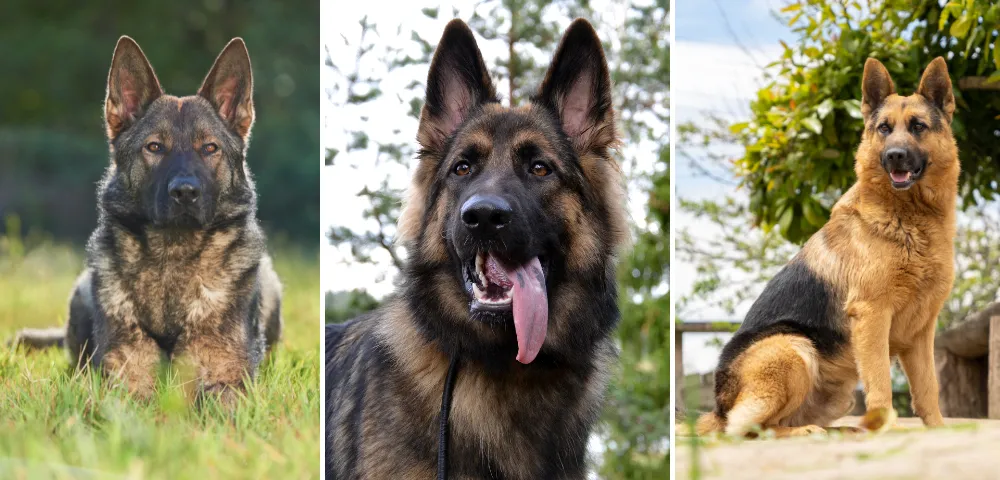
Female German Shepherds typically stand 22-24 inches tall and weigh 50-70 pounds, maintaining a more petite and svelte physique. While their frame may be more slender, the females are no less capable of retaining the breed’s renowned athleticism and endurance.
Their smaller, sleeker build can be advantageous for families living in more compact homes, as the female German Shepherd’s dimensions make them a better fit.

02. Female German Shepherd’s Heat Cycles
A female German Shepherd owner needs to be aware of the regular heat cycles that she experiences. Occurring approximately twice a year, these heat cycles can last for up to three weeks, during which she undergoes significant physiological and behavioral changes.
The dog’s body prepares for the possibility of pregnancy, leading to a heightened state of restlessness and vocalization. She may exhibit an increased desire to roam and explore, driven by hormonal urges to seek out potential mates. This can present a challenge for owners, who must be diligent in ensuring their female dog remains safely confined to the home or yard to avoid any unplanned breeding or potentially dangerous encounters.
A female dog doesn’t experience the heat cycles after she is spayed. You can read more about spaying a female dog in the Section 4 below.

03. Marking Behavior of Male German Shepherds
Male German Shepherds or any male dog are known for their dominant and territorial marking behaviors, which can pose significant challenges for owners, particularly those living in apartments or homes with limited outdoor space. They mark their territory by spraying urine on different spots.
This marking behavior is not only unpleasant to deal with, but it can also be incredibly difficult to clean up effectively, leaving lingering odors and stains that are hard to remove.

For owners of male German Shepherds, it is crucial to be proactive in addressing this issue through diligent training and proper management. By dedicating extra time and attention to training their male German Shepherd not to mark indoors, owners can help curb this undesirable behavior. A well-adjusted male German Shepherd is less likely to feel the need to assert its dominance through urination.
A male dog stops doing the urine marking after he is neutered. You can read more about neutering a male dog in Section 4 below.
04. Spaying and Neutering Cost & Care
Spaying a female dog is a surgical procedure that involves removing the reproductive organs(ovaries and uterus) of a female dog whereas neutering is a surgical procedure that involves removing the testicles of a male dog. After these surgeries dogs can’t produce puppies anymore.
Related: Breeding Frequency for Male German Shepherds
There are many benefits of spaying and neutering dogs. Spaying a female dog prevents unwanted pregnancies, the risk of uterine infections, and reduces the risk of certain reproductive cancers such as mammary cancer whereas neutering male dogs prevents testicular cancer and enlargement of the prostate gland, while also curbing unwanted behaviors like roaming, and aggression, and marking territory.

The spaying procedure for a female German Shepherd tends to be more expensive than the neutering procedure for a male. This is primarily due to the more complex nature of the spaying surgery, which involves removing the female dog’s ovaries and uterus. The neutering process for a male dog simply involves the surgical removal of the testicles, which is a simpler and quicker procedure.
Additionally, female German Shepherds often require more extensive pre-operative testing and monitoring to ensure the spay surgery is as safe as possible, adding to the overall costs. Recovery time and post-operative care can also be more intensive for spayed females compared to neutered males.

05. Temperament
The temperament of male and female German Shepherds can vary quite significantly, with each gender exhibiting distinct personality traits and behavioral tendencies.
Male German Shepherds are typically larger, more physically imposing, and often possess a more dominant, assertive behavior. They are frequently described as being bolder, more territorial, and more protective of their family and home. Male German Shepherds can be quite headstrong and require a confident, experienced handler to properly train and socialize them. They possess intense loyalty and may become overly attached to their owners and suffer from separation anxiety when left alone. If you travel a lot there must be someone who should spend enough time with him.
RELATED: What is the Average Intelligence of German Shepherds?
Their stronger territorial instincts and tendency towards dominant behavior may also pose challenges for first-time or less experienced owners.
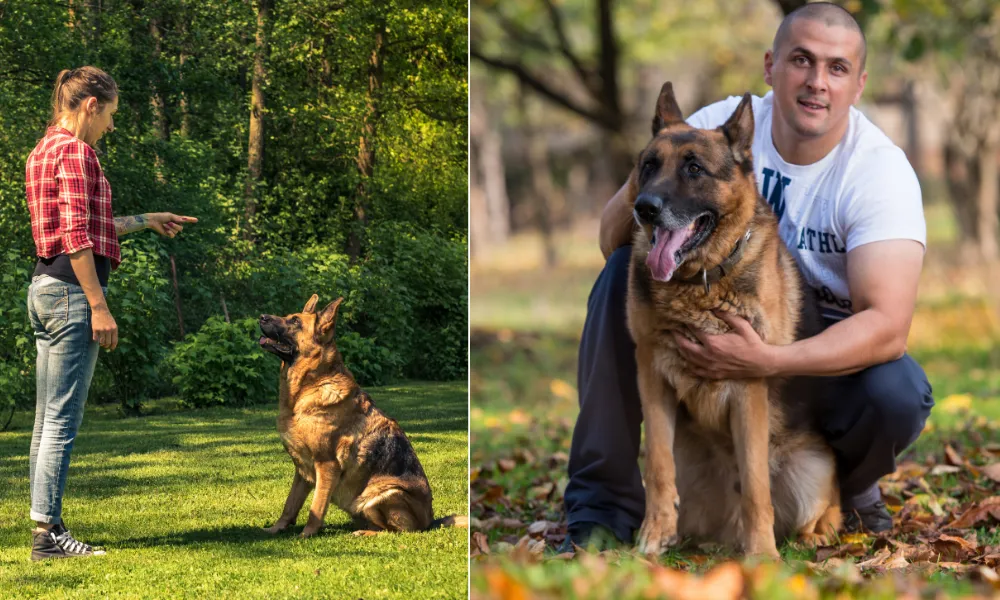
In contrast, female German Shepherds are generally more gentle, affectionate, and obedient. While they are still loyal and alert guard dogs, females tend to be slightly more docile, cooperative, and eager to please their owners. Females may also be a bit more independent and less reliant on constant human interaction compared to male German Shepherds. They usually mature faster and can be less aggressive, making them a good fit for first-time dog owners.

Ultimately, the specific temperament of any individual German Shepherd male or female depends on a variety of factors, including genetics, early socialization, and the individual dog’s unique personality.
06. Which GSD Gender is Better for Kids?
When it comes to choosing between a male or female German Shepherd for a family with kids, both genders can be excellent companions, but there are some differences to consider.
Generally, female German Shepherds tend to be more nurturing and gentle, which can make them more intuitive around children. They often exhibit protective instincts and may be more inclined to be attentive to the needs of the kids.
During a female German Shepherd’s heat cycle which occurs twice a year, her hormones can cause significant changes in her behavior and temperament. She may growl, bark, or even snap at children who try to approach or play with her. Owners need to be extra careful in monitoring their female German Shepherd’s interactions, especially with kids, when she is in heat.

On the other hand, male German Shepherds are typically larger and can be more robust playmates, offering endless energy for active children.
Training and socialization play a crucial role in determining how well any German Shepherd, regardless of gender, will interact with kids. A well-trained male or female can be equally affectionate, loyal, and protective. Females might mature faster and be easier to train, making them a good match for busy families. However, males can also be very obedient and loving if given consistent training and positive reinforcement.
07. Health Issues of Male & Female German Shepherds
The female German Shepherds are prone to a higher incidence of certain medical conditions compared to their male counterparts. Females may have an increased risk of developing urinary tract infections, which can be painful and require prompt veterinary treatment. Additionally, females may face mammary tumors as they age.

In contrast, male German Shepherds face their own set of common health problems, such as the risk of hip dysplasia and elbow dysplasia. The hip dysplasia cost can range from $3,500 per hip to $7,000 depending on your dog’s condition, size, age, and overall health, and elbow dysplasia costs around $1500 to $4000 per elbow. These skeletal abnormalities can be expensive to manage and potentially require extensive medical care.
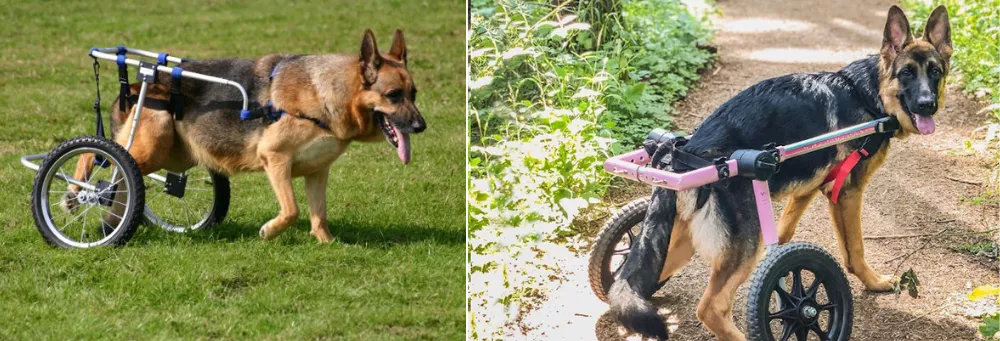
That’s why it is always important to buy a German Shepherd(male or female) from a professional and reliable German Shepherd breeder who provides pedigree and health guarantees for the dogs that they breed and sell.
Related: Common German Shepherd Health Myths Debunked
08. High Energy Levels of Male German Shepherds
Male German Shepherds particularly working lines are known for being high-energy working dogs that require a substantial amount of physical and mental stimulation on a daily basis.
If they don’t get they may become bored, frustrated, and even destructive in their behavior. They may start chewing on furniture, digging holes in the yard, or engaging in other unwanted behaviors as a way to alleviate their pent-up energy and need for stimulation.

A dog owner must provide these dogs with ample opportunities for exercise, such as long walks, jogs, hikes, fetch games, and training sessions that challenge both their bodies and their keen intellects.
Mental stimulation is just as crucial as physical activity, so owners should incorporate obedience training, agility courses, nose work, and other cognitively engaging activities into the dog’s routine. If not given male German Shepherds may face behavioral issues, including hyperactivity, excessive barking, and even aggression in some cases.
09. Trainability
Male German Shepherds are often described as more confident, assertive, and independent-minded, which can make them slightly more challenging to train initially. However, with firm, consistent guidance, they can be molded into remarkably obedient and capable working dogs, excelling in tasks that require strength, stamina, and a take-charge mentality.
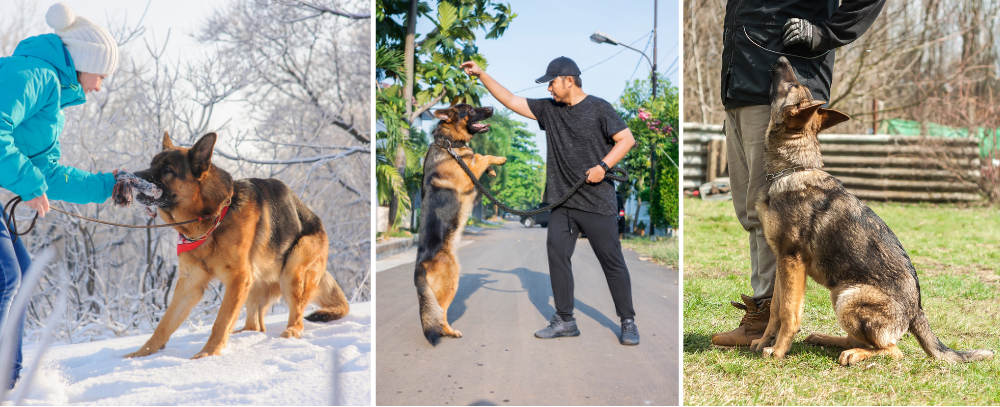
Female German Shepherds tend to be more obedient, mature, affectionate, and eager to please their handlers, making them slightly easier to train from a young age.
10. Lifespan of Male and Female German Shepherds
The lifespan of German Shepherds can vary quite significantly based on the dog’s gender. On average, female German Shepherds tend to live longer than their male counterparts. While the typical lifespan for this breed is around 9 to 13 years, the average female German Shepherd has a life expectancy of 10 to 14 years, while males generally live 9 to 12 years.
This difference is largely attributed to hormonal and physiological factors. Females, for instance, do not experience the same degree of muscle and bone deterioration as they age, leading to fewer orthopedic issues over time. Additionally, the estrogen in female dogs provides some protective benefits for the heart and other vital organs as they grow older.

Male German Shepherds, on the other hand, often put more strain on their bodies through more energetic behavior, which can lead to a higher incidence of injuries, joint problems, and other age-related health conditions that can shorten their lifespan.
Proper diet, exercise, and veterinary care play a major role in determining any individual dog’s longevity.
Final Thoughts
The decision between getting a male or female German shepherd or which gender is better often comes down to the specific needs, preferences, and lifestyle of the owner or his family. Both genders possess the superintelligence, athleticism, and protectiveness, and with proper training and socialization, either a male or female can make an exceptional lifelong companion. Careful consideration of factors like size, energy level, and temperament can help ensure a good match and a rewarding experience for all.
If you like this post then don’t forget to share with other people. Share your feedback in the comments section below.
Also Read
- How Slant (Sloped) Back German Shepherds Were Created?
- A Guide for Raising German Shepherd Puppy at Home
- Is White German Shepherd a Good Family Dog?
- Is German Shepherd Right for Apartment Living?
- 4 Types of German Shepherd Coats

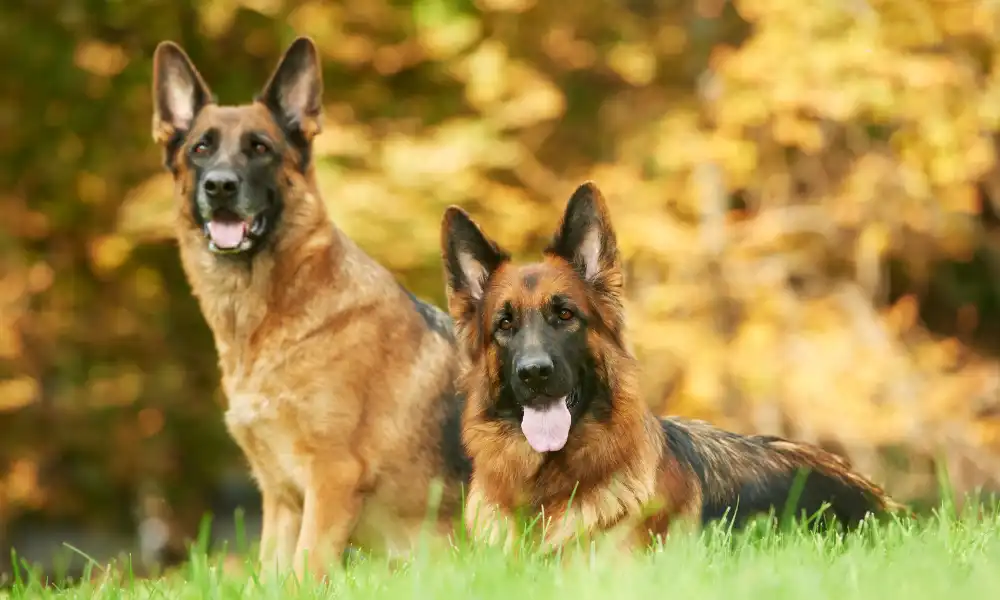


Leave a Reply